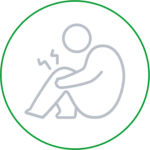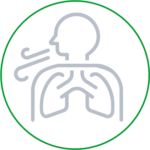
ALS is a disease that typically involves a gradual onset. The initial symptoms of ALS can be quite varied. One person may have trouble grasping a pen or lifting a coffee cup, while another may experience a change in vocal pitch when speaking.

The progression rate of ALS can be quite variable, as well. Although the mean survival time with ALS is two to five years, some people live five years, 10 years or even longer.

Symptoms can begin in the muscles that control speech and swallowing or in the hands, arms, legs or feet. Not all people with ALS experience the same symptoms or the same sequences or patterns of progression. However, progressive muscle weakness and paralysis are universally experienced.

A gradual onset of progressive muscle weakness – which is generally painless – is the most common initial symptom in ALS. Other early symptoms vary but can include tripping, dropping things, abnormal fatigue of the arms and/or legs, slurred speech, muscle cramps and twitches and uncontrollable periods of laughing or crying.

When the breathing muscles become affected, people with the disease will ultimately need permanent ventilatory support to assist with breathing.

Since ALS attacks only motor neurons, the senses of sight, touch, hearing, taste and smell aren’t affected. For many people, muscles of the eyes and bladder generally are not affected.
Diagnosis
ALS is a difficult disease to diagnose. There is no one test or procedure to ultimately establish the diagnosis of ALS. It’s only through a clinical examination and series of diagnostic tests, often ruling out other diseases that mimic ALS, that a diagnosis can be established. A comprehensive diagnostic workup includes most, if not all, of the following procedures:
- Electrodiagnostic tests, including electromyography (EMG) and nerve conduction velocity (NCV)
- Blood and urine studies, including high resolution serum protein electrophoresis, thyroid and parathyroid hormone levels and 24-hour urine collection for heavy metals
- Spinal tap
- X-rays, including magnetic resonance imaging (MRI)
- Myelogram of cervical spine
- Muscle and/or nerve biopsy
- A thorough neurological examination
These tests are done at the discretion of the physician, usually based on the results of other diagnostic tests and the physical examination. Several diseases have some of the same symptoms as ALS, and most of those conditions are treatable.

